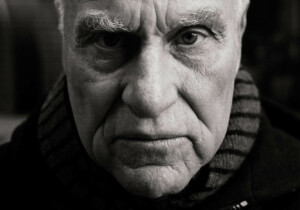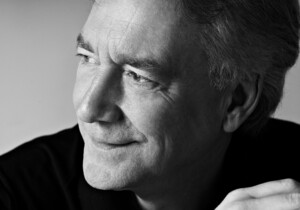Elizabeth Sverbeyeff Byron, a longtime architecture editor at several home design magazines and renowned for her prescience in spotting undiscovered young architects, many of whom have gone on to major careers, died at her home in Manhattan on April 1 of natural causes after a brief illness unrelated to the coronavirus. She was 96.
Despite her descent from the loftiest ranks of 19th-century Russian royalty and literature, Byron was justly proudest of her six-decade career in design journalism. It began at the Home Section of The New York Times in the 1960s (where she and another Times design reporter, Barbara Plumb, wrote The New York Times Guide to Home Furnishings,) and ended at Architectural Digest in 2016, when she was well into her nineties, after an unbroken run that also included long associations with House & Garden and Elle Décor. Her combination of a feverish work ethic, discriminating eye, extensive connections in international high society (she was a fixture in the Social Register), and endless curiosity made her a valued talent scout and interior stylist with a keen instinct for the next and best new thing.
Byron was known as much for her resourcefulness as for her superb taste, demonstrated when she arrived at a Colorado ski lodge she was having shot and discovered that, contrary to the architect’s assurances, it was absolutely empty. With characteristic forcefulness, she quickly convinced the Denver showroom of Knoll International to deliver enough floor samples to fully furnish it almost overnight and got a gallery to provide suitable artworks. However, even the young architects she was always eager to promote found this perfectionist to be a demanding taskmaster. Tod Williams, whose work she championed early on, once confided to me what a harrowing experience it was to be dragooned by her when she published a house by him and Billie Tsien in House & Garden.
It was there, from the time of my arrival as a senior editor in 1979 until her forced departure as architecture editor in 1988 (S.I. Newhouse, Jr. Condé Nast’s board chairman, had decreed “Architecture is death”—that is to say, not a moneymaker) that we forged a most unlikely but fruitful partnership, sometimes contentious but always rewarding. I had unflagging confidence in Elizabeth’s impeccable taste, left it to her to decide what should be published, and we very rarely disagreed. Our good cop/bad cop routine was an essential division of labor, since her role in acquiring projects gave me, as the critic, complete freedom to honestly assess a project, which was not at all typical of the adulatory tone of such magazines at that time, and quite the opposite of our principal rival, Architectural Digest.
Well before my arrival at House & Garden, she had already run houses by Robert Venturi and Denise Scott Brown, Charles Moore, Richard Meier, Peter Eisenman, and Michael Graves, whose work she became familiar with from her diligent attendance at lectures and exhibitions at the Institute for Architecture and Urban Studies, the period’s hothouse of innovative thought and practice. Among the major figures we introduced to a mass readership were Frank Gehry in 1980, Arata Isozaki and Steven Holl in 1983, and Thom Mayne and his then partner Michael Rotondi in 1984. I even concurred with some of her less-than-avant-garde enthusiasms, such as Hugh Newell Jacobsen. But although Jacobsen’s skillful amalgams of traditional and modernist forms were not to my personal taste, I always accepted that such expertly executed middle-of-the-road design was required in a periodical aimed at a broad national audience.
Elizaveta Vladimirovna Sverbeeva (as her name was sometimes spelled in one of several variations of Cyrillic orthography) was born on August 28, 1923, in Berlin, where her paternal grandfather, Sergei Nikolaievich Sverbeyeff, had served as the last Russian Imperial ambassador to Germany and played an important but ultimately unsuccessful role in trying to avert the outbreak of World War I. Her father, Vladimir Sergeyevich Sverbeyeff, was a physician, and her mother, Countess Mariya Alexeievna Belevskaya-Zhukovskaya, descended from the most colorful, and some thought scandalous, branch of the Russian Imperial House of Romanov.
Byron’s great-great-grandfather was Tsar Alexander II, who married his mistress just one month after the death of his wife, Tsarina Maria Alexandrovna. But because Alexander II’s adventurous son, Grand Duke Alexei– who made a widely publicized tour of the US in 1871-1872 that included a buffalo hunt in Nebraska with General Custer and Buffalo Bill Cody– married the daughter of the Romantic poet Vasily Zhukovsky (the era’s foremost Russian writer after Pushkin but nonetheless a commoner), the couple was barred from the line of succession. A new family name, Belevsky-Zhukovsky, was devised for their offspring. In 2006, the New York Public Library acquired a trove of Belevsky-Zhukovsky family memorabilia from Byron, whom I used to call Elizaveta Vladimirovna in traditional Russian patronymic fashion. However, that same year she refused an invitation to attend the State Funeral re-interment of the remains of her kinfolk Tsar Nicholas II and his family in St. Petersburg’s Peter and Paul Cathedral because of her opposition to Vladimir Putin.
When the Russian Revolution abruptly ended her grandfather’s diplomatic career, Ambassador Sverbeyeff and his family fled to Berlin, which during the Weimar Republic became the largest White Russian expatriate community in Europe. The rise of Hitler spurred a second mass exodus of Russian aristocrats, this time to Paris, where Elizabeth Sverbeyeff was educated and lived until immigrating to the US. In New York in 1947 she married Alexandre Tarsaidze, the much-older scion of a noble Georgian family who wrote several books on Russian royal history. They divorced in 1953. Her second husband, whom she wed in 1965, was the Harvard-educated art dealer Charles Byron-Patrikiades. He died in 2013, and she leaves no immediate survivors.
Remarkably, she was able to advocate the finest in new architecture for more than half a century to a general readership almost at the same time as it was being published initially in professional journals, rather than afterward in the typical trickle-down sequence of cultural accretion. Her eagerness even in the last days of her life to keep up with the latest developments in all the arts remained a constant inspiration to me. So was her unflagging joy in the douceur de vivre. As a friend who was with her at the very end told me, “She just went out like a candle,” an apt metaphor for the illumination she gave.
Dosvedanya, Elizaveta Vladimirovna.











